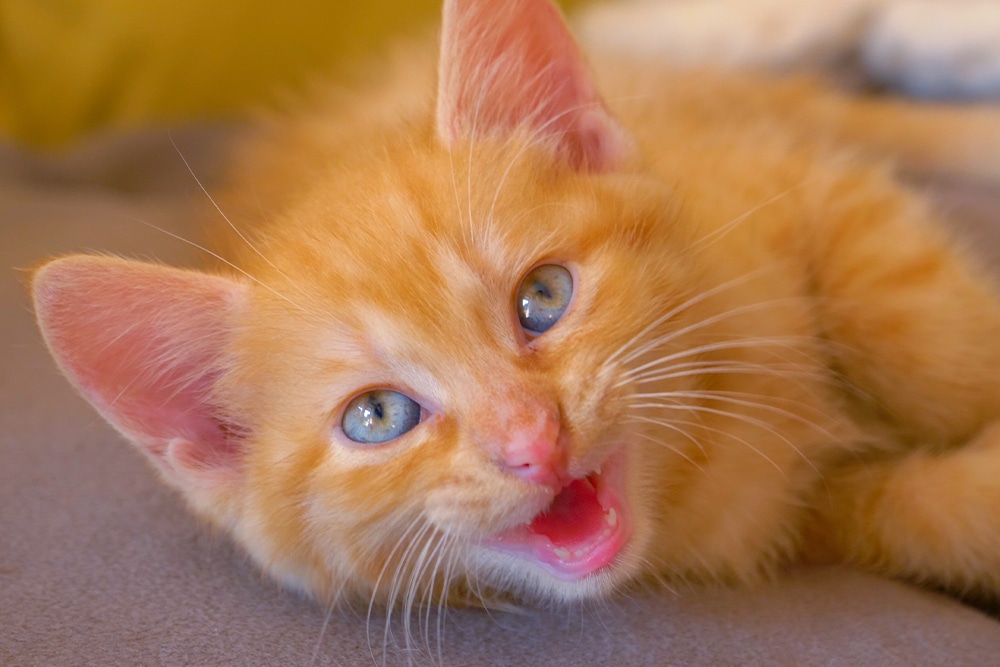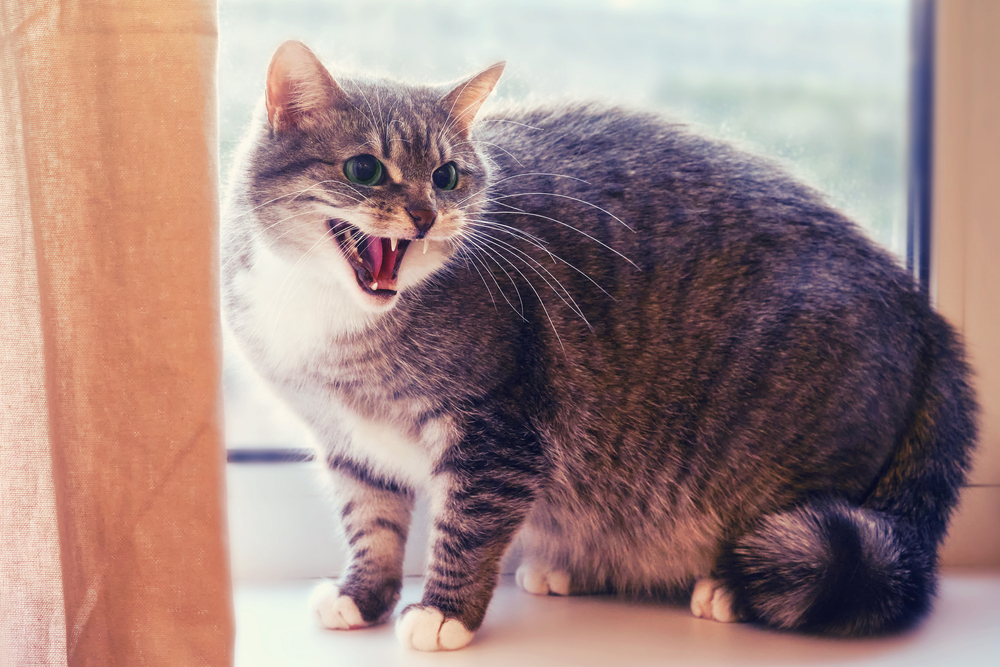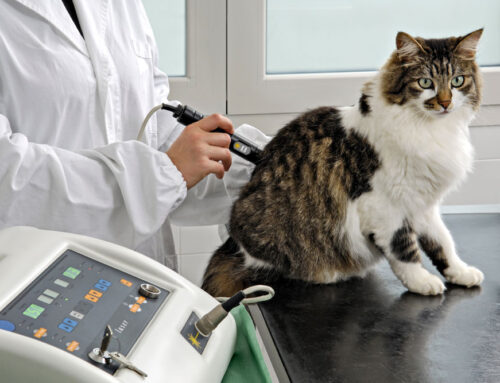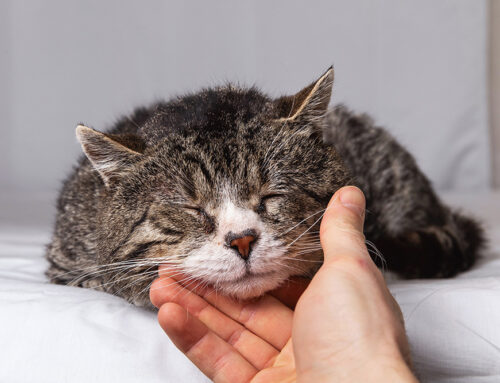If you landed on this page after a sleepless night listening to your cat yell at you, take a breath—you are not the only one pacing the hallway at 3 a.m. with a vocal cat. In this article we explore excessive meowing from medical, behavioral, and environmental angles so you can understand when to relax, when to adjust the home routine, and when to bring your pet to see us.
First Things First: How Much Meowing Is “Too Much”?
Every cat creates its own soundtrack. Some breeds, such as Siamese, are naturally talkative. Others are normally quiet and any spike in meowing stands out immediately. We consider vocalization excessive when it is:
- Louder, longer, or more frequent than your cat’s typical pattern
- Accompanied by changes in appetite, litter box habits, or activity level
- Disruptive to sleep cycles—yours or the cat’s
If you need more background before diving in, the AAHA article Why Is My Cat Meowing So Much? Exploring Excessive Vocalization in Cats provides a concise overview.
Medical Reasons We Investigate First
Our team always starts by ruling out illness, because treating an underlying condition often quiets the meows without further intervention.
Hyperthyroidism and Hormone Imbalance
Over-active thyroid glands rev up metabolism, making many cats ravenous, restless, and noisy. The Feline Hyperthyroidism Guidelines – AAHA outline the bloodwork and treatment options—medication, diet, radioactive iodine, or surgery—that our doctors follow.
Pain You Cannot See
Cats mask discomfort brilliantly. Vocalizing may be the only outward clue to arthritis, dental disease, or abdominal pain. Compare your cat’s behavior to the checklist in What’s Wrong? Common Pet Pain Signs and let us know if anything sounds familiar.
Cognitive Decline
Senior cats can pace the house and cry at night when develop a disease similar to human dementia. The resource Signs of Cognitive Decline in Older Pets – Colorado State University explains how disorientation manifests in aging pets.
Neurological Disease
Although uncommon, brain tumors or other neurologic disorders may trigger sudden yowling or a change in voice. Details on diagnostics appear in Brain Tumors in Small Animals – NC State Veterinary Hospital.
Behavioral and Emotional Triggers
When lab tests look normal, we turn to life circumstances.
Attention Seeking
Cats quickly discover that meowing summons treats, playtime, or a lap to curl in. The guide How Can I Fix My Cat’s Behavior Problems? walks through positive-reinforcement strategies we recommend.
Mealtime Anticipation
If your cat meows the second an alarm clock rings, try automatic feeders that release kibble on schedule. Predictability removes you from the negotiation.
Multi-Cat Tension
In households with more than one feline, meowing can be part warning, part complaint. We often refer clients to Addressing Tension Among Cats for step-by-step territory management.
Anxiety and Environmental Change
A move, new baby, or even rearranged furniture can upset a cat’s sense of security. The ASPCA’s Common Cat Behavior Issues outlines signs that stress is behind the noise.
Normal Communication
Not all vocalizations are problematic. Purring, chirping, and trilling serve social purposes you may never notice. For a fun refresher, see The Secret Feline Language: 5 Reasons Why Your Cat Purrs.
When Age Becomes a Factor
Older pets can experience sensory loss, arthritis, and confusion simultaneously. The ASPCA article Older Cats Behavior Problems summarizes what to expect as the years go by and how we can help with diet, supplements, and home modifications.
Creating a Quieter Home Environment
Enrichment That Works
Mental engagement often translates into calmer evenings. For layout inspiration, browse the Indoor Pet Initiative – Cat Environment. Simple adjustments—window perches, food puzzles, vertical shelves—can redirect energy.
DIY Fun
If store-bought toys lose their charm quickly, try rotating homemade items from DIY Enrichment Toys For Your Cat. Novelty is half the battle.
Noise-Reducing Schedule
- Feed on a strict timetable, even weekends.
- Initiate at least two 10-minute play sessions daily.
- Provide a dark, draft-free sleeping area so your cat learns that nighttime is for rest.
Could This Ever Be an Emergency?
Yes. Seek immediate veterinary care if your cat’s meowing is accompanied by:
- Labored or open-mouth breathing
- Straining in the litter box without producing urine
- Sudden hind-limb weakness
- Profuse vomiting or diarrhea
- Collapse or seizures
Rapid assessment prevents minor issues from turning critical.
Frequently Asked Questions
Does neutering or spaying reduce excessive meowing?
In many intact cats, vocalization relates to mating behavior. Surgery often reduces roaming and calling within a few weeks.
Will another cat as a companion solve the problem?
Not necessarily. Introducing a second pet can backfire if territory or personalities clash. Read through the multi-cat guidelines above before deciding.
How long should I ignore an attention-seeking meow before giving in?
Consistency is key. Ignoring means zero eye contact, no verbal response, and no treats until your cat is quiet. Even one slip can reset progress.
Can white noise machines help?
For some cats, soft ambient sound blocks neighborhood noises that might trigger alert meowing. Make sure volume is low and constant.

What to Expect When You Visit Us
During the appointment we:
- Review a timeline of the vocal behavior—you can help by keeping a two-week diary.
- Perform a nose-to-tail physical exam focusing on weight, thyroid size, dental health, joints, and neurologic reflexes.
- Recommend baseline bloodwork, urine analysis, and blood pressure screening.
- Discuss imaging (X-ray or ultrasound) if abdominal pain or tumor is suspected.
- Outline a personalized behavior and enrichment plan based on your household.
Many conditions improve dramatically once a treatment plan begins, but ongoing communication between us and your family is crucial for fine-tuning.
Small Steps You Can Start Today
- Install a motion-activated night-light near litter boxes for senior pets that can’t see well in the dark.
- Switch to shallow food dishes; whisker fatigue can cause fussing at mealtime.
- Offer a heated bed to arthritic cats—the warmth eases joint pain and reduces restless pacing.
- Use pheromone diffusers in rooms where vocal episodes start.
Living with a vocal cat can test patience, yet those meows are often the earliest signal that something needs attention—physically or emotionally. Our team at Woodland Springs Veterinary Hospital is ready to listen—literally—and help translate the chatter. If questions remain, you can contact us or meet the team online before booking a visit. Together, we’ll decode the conversation and restore quiet comfort to your household.







Leave A Comment